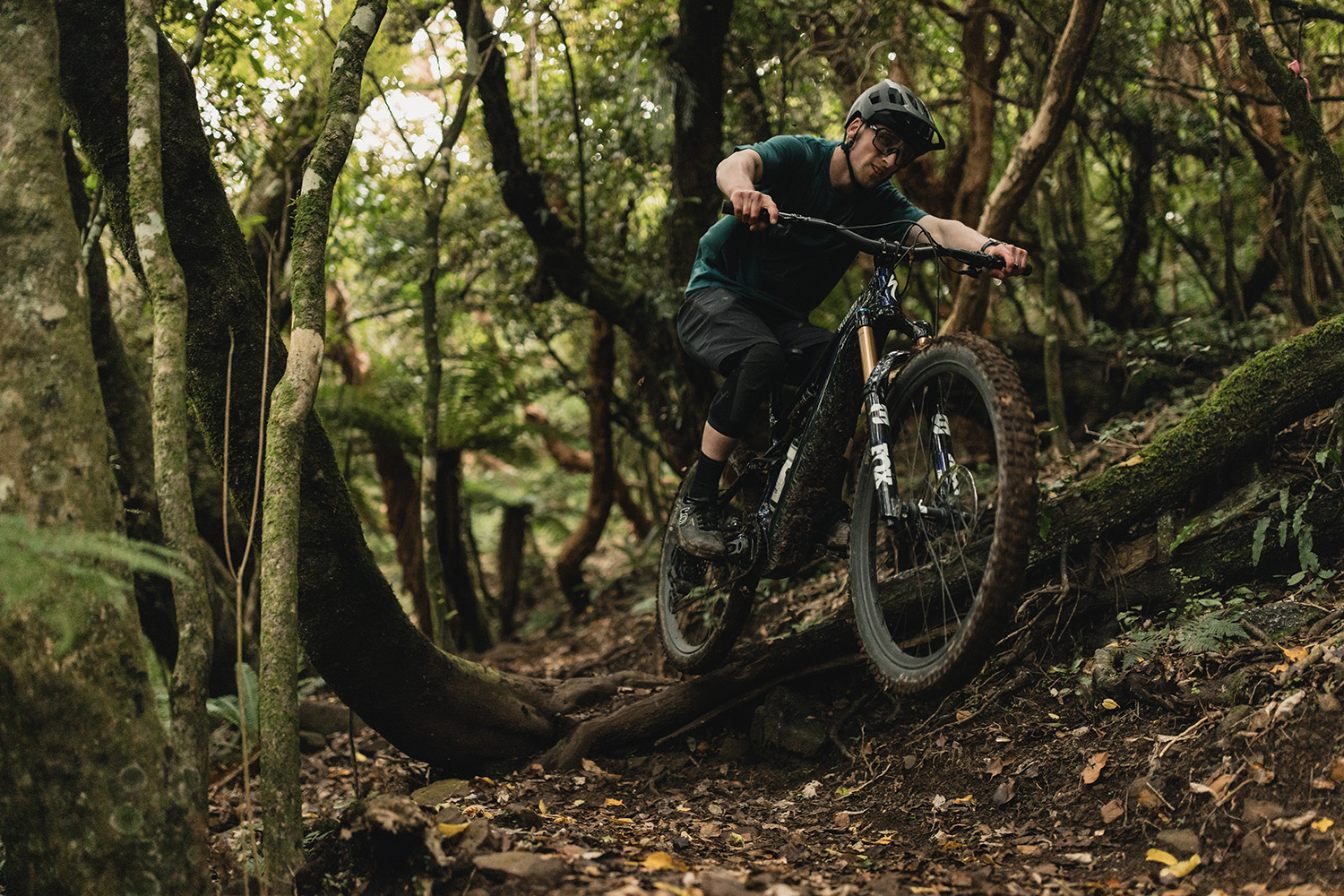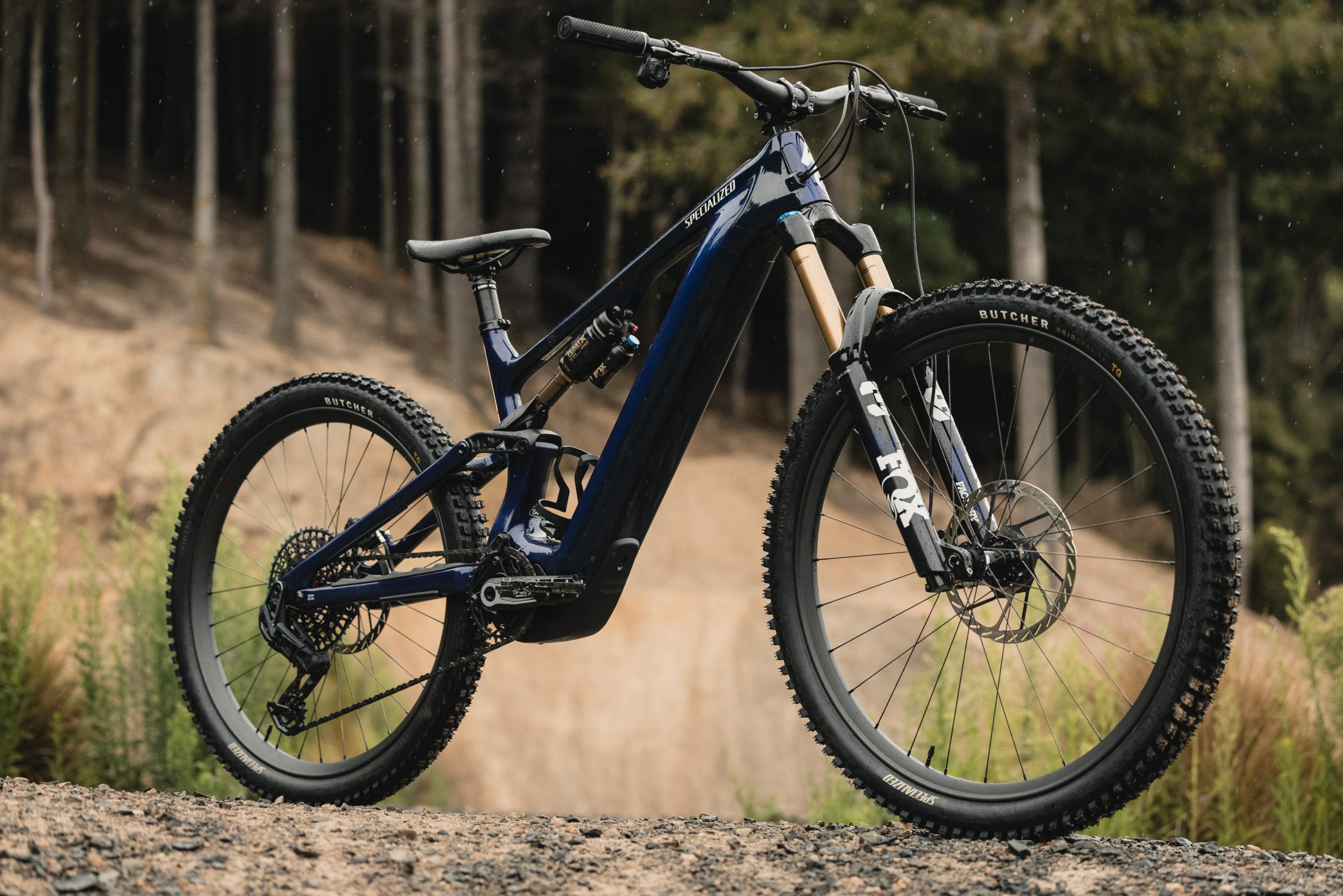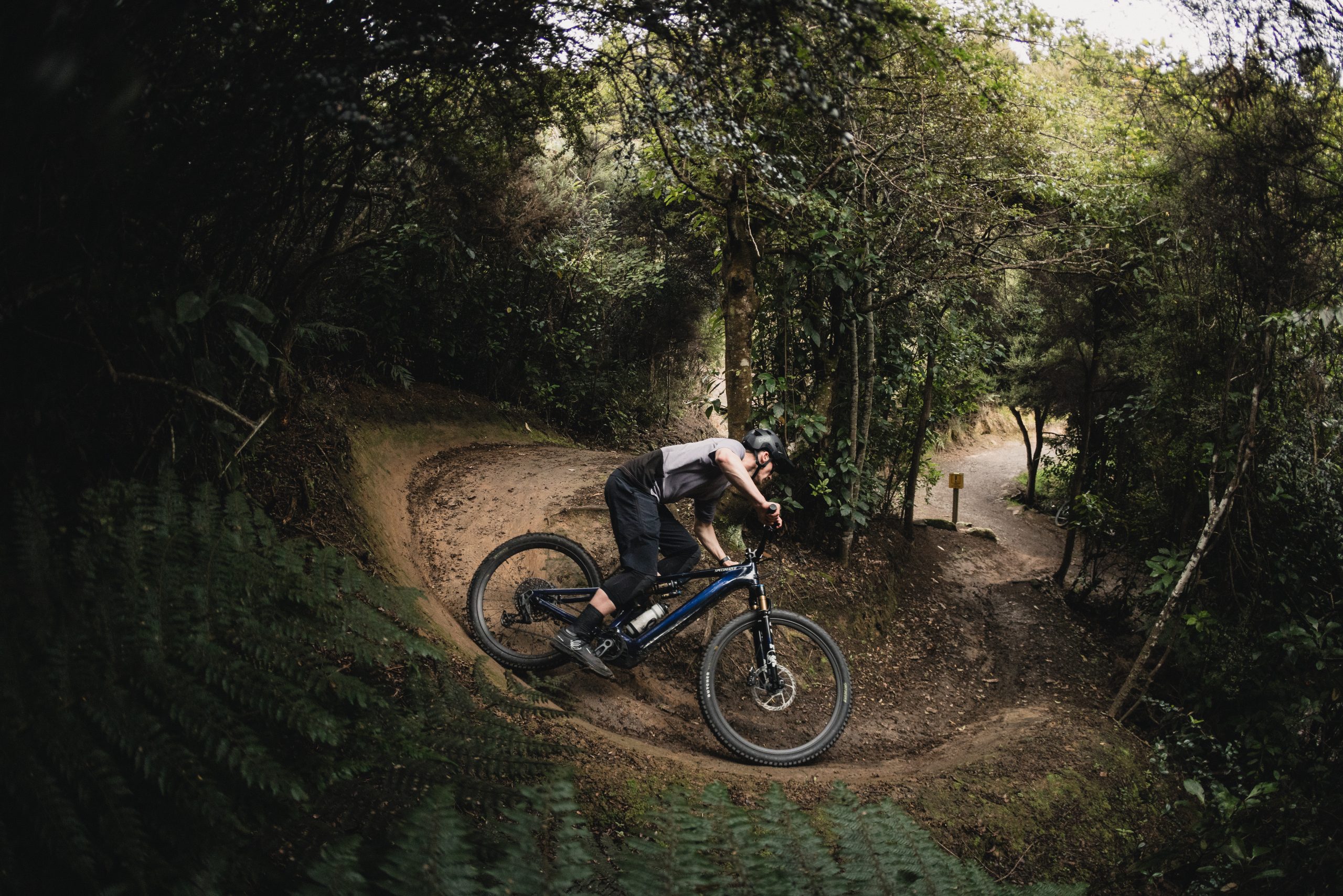Words: Nathan Petrie
Images: Cameron Mackenzie
As an unashamed fan of eBikes, I’m always pumped when I get the chance to throw my leg over a new offering from a brand in the space. So, when the opportunity presented itself to try out the highly anticipated new Specialized Levo, I knew it was something I couldn’t turn down. The Levo’s a bike that holds a bit of a special place in my heart, seeing as the first generation one was the first eBike I had the chance to ride. Times have changed a lot since then though, and in the rapidly evolving world of e-bikes I was interested to see how this redesigned Levo stacked up! Pulling the bike off the rack, the first things that are noticeable about the new Levo – aside from its Stumpjumper-inspired styling – are the large Geni shock and the stout downtube. But don’t let either of these things fool you into thinking that the new Levo’s just a two wheeled couch like some full-power eBikes can be. A quick bit of carpark tuning later and it was apparent that the Levo had a lively and responsive feel. At a time where riders are facing the choice between a full-power or lightweight eBike, this kind of responsiveness with the power and range the Levo offers may provide some riders with a bit of food for thought.

A glance over the Levo’s geometry chart and travel numbers reveals where this responsive demeanour might come from. The key figures like head-tube and seat-tube angle, chain-stay length, reach and wheelbase were all pretty standard across the board for our S4/Large size test bike. As with many of Specialized’s gravity-oriented bikes, the head angle, chain-stay length and bottom bracket height can also be adjusted to offer a more customised riding experience. On top of this, the travel – at 160mm front and 150mm rear – is a pretty ideal amount for all-round riding. The weight also feels fairly respectable too; impressive given the large 840Wh battery spec’d on our Pro level build. As has been the case for a while with Specialized eBikes, the overall package is fairly well thought out. The remote – while still wired – is fairly slim and very responsive, and the enlarged touch screen is well integrated into the top tube so you can easily keep tabs on your battery level and power setting. Specialized have added to the versatility of the system by giving riders the choice between either the 840Wh battery we had, or a smaller 600Wh aftermarket option.
On top of this, riders can use the 280Wh aftermarket extender for even more range with either battery. This gives a fairly impressive 1120Wh of capacity at its maximum which should offer plenty of scope for the kind of back country exploring eBikes are good for. The Levo also features an eBike-first in-frame storage option, with a SWAT bag that fits neatly above the battery in the head tube area. The build kit on our Pro level model was also largely what you’d expect from a bike at this price point. From the nicely finished carbon frame to the Factory Fox 38 fork, SRAM XO transmission drivetrain and carbon Roval wheels, the build kit didn’t leave you feeling short changed. The frame and motor were nice and quiet on the descents as well, with no annoying motor or cable rattle to speak of. The only possible area for improvement would be consistently speccing a 200mm dropper post as standard on S4 bikes. While many companies seem to be keen on allowing riders to size up, anything less than 200mm on what would be a large bike is just too short for the average buyer of that size.

While the first ride on a new bike will always be a bit of an unfamiliar experience, having that first ride in an unfamiliar location can really highlight how easy it is to get on with a new bike. For me the first lot of riding on the Levo came in the form of a trip to Dunedin to highlight what the city had to offer as a riding destination. The first outing on the bike at Signal Hill confirmed that the bike is pretty easy to just get on and ride. The predictable handling and suspension performance means that, aside from the usual cockpit adjustments, there’s not much of a bedding in period – or any quirks to get used to. The first thing that strikes you on the climbs, is how smoothly and quietly the bike delivers its ample power and torque. Some eBike motors aren’t exactly stealthy when it comes to putting the power down with a noticeable whine from the motor. This was something Specialized put a lot of effort into when developing the new 3.1 motor. The new Levo also has a decent bump in power and torque over the outgoing model, with that power being maintained over a much wider cadence range. While my first ride didn’t feature much in the way of technical climbs, we did head up a couple of fairly steep sections of single (and double) track. Aside from some unrideable clay patches, these climbs didn’t seem to faze the Levo, even in Trail mode.
The responsiveness that was noticeable in the car park was also put to the test early on at Signal Hill, by rolling through a few sets of jumps. Some full power eBikes can be a bit of a chore to get off the ground, especially with flatter take-offs, and can still feel slightly weighty in the air. Not so with the new Levo. On both the high-speed DH style jumps on the Nationals track, and the more sculpted lips on the Jumps track, the bike was more than willing to get airborne. When in the air it was also easy to move the bike around and get some decent shape – once again, not something that is readily done with all full power eBikes. The bike also performed well on the slippery rocks and roots that we were treated to throughout our time in Dunedin. The bike struck a nice balance when it came to frame stiffness, holding its line well in rough sections but not causing the bike to feel harsh or deflect off a wet root or rock. This stiffness, coupled with the suspension and wheels, made for a comfortable and compliant ride in rough and unfamiliar terrain where you’re not always on the ideal ride line. The revamped Specialized tyres also offered plenty of traction in most places and, when combined with the SRAM Mavens, provided a nice sense of control over the slick terrain.

The outing in Dunedin also provided a good opportunity to put the range of the new Levo to the test, with two decent length rides in one day. While these rides didn’t cover a huge number of kilometres, we did get in near on 1200m of climbing across two locations. This left us with around 27 percent of the battery remaining by the end of the day. I also had the opportunity to try the Levo a bit closer to home, in two different situations that eBikes are good for. The first was more of a power hour-and-a-half on the trails of the Christchurch Adventure Park and Victoria Park. The adventure park in particular can be very harsh on bikes, between the stretches of exposed volcanic rock and the hard pack singletrack littered with roots and rocks. Once again, the Levo provided a smooth and controlled ride on a lot of the rough sections and handled the steeps in both locations without any issue. Another run through some jumps on the adventure park’s O-Zone trail confirmed that feeling of predictability and liveliness that came through in Dunedin.
The second outing was more about tapping into the spirit of exploration eBikes in general are great for. This outing in the Canterbury high country largely featured some lower grade grassland, riverbed traversing and hiking trail. While none of this really challenged the Levo from a motor, battery or suspension travel perspective, it highlighted the general-purpose nature of the bike. Even on less demanding terrain at a more leisurely pace, the Levo never felt like too much bike. The same responsiveness was still there, and the motor still offered decent assistance when cruising along in Eco mode. So, after a bit of time in a good range of settings, I think it’s fair to say that the Levo carries on the lineage pretty well. It’s still that same great all-rounder bike that it’s always been, but with some useful improvements to the power, range, frame and suspension performance. It’s a bike that’s easy to just get on and ride in a wide range of terrain and for a variety of ability levels. Like its lower-powered (Levo SL) and unpowered (Stumpjumper) stablemates, it gives riders user friendly geometry, travel numbers and ride feel that makes it an easy bike to feel comfortable on right away. The combination of reasonable weight, good integration, generous range and quiet, responsive motor certainly maintain its place in the top tier of full-power eBikes.

